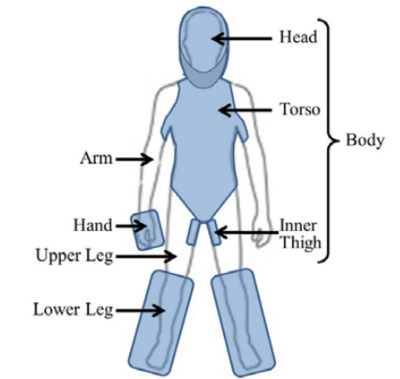Fencing:Acknowledgement Of Blows
Jump to navigation
Jump to search
Acknowledgement of Blows
- In judging blows, all combatants are presumed to be wearing thin clothing, such as unpadded linen, not armor, and that the opponent's weapon is extremely sharp on point and edge. Any blow that would have penetrated the skin in the judgement of the person receiving the blow shall be counted a good blow. Kingdoms shall not alter this standard.
- The exception of "armor as worn tournaments" is allowed, in which certain types of armor may be considered to be resistant to specific types of blows for the purposes of scoring.
- Likewise tournaments with differing victory conditions (for example, "only head shots count") are explicitly allowed.
- The person struck has the responsibility of acknowledging a blow. The receipt of a valid blow shall be acknowledged clearly with words and/or motions, such as "good arm" or "dead".
- No accessories shall be worn that prevent a combatant from acknowledging blows. It is up to the combatant to know whether any necessary equipment (such as mask, helm and other safety equipment) renders the acknowledgement of blows in certain areas difficult, and will make every effort to account for this deficit. This includes, but is not limited to, loose clothing designed to hang out from the fencer, such as bulbous sleeves or hoop skirts, or rigid cuffs on gauntlets. Care must be exercised to acknowledge blows that strike these articles of clothing if a sharp blade would have penetrated those articles and struck the body part underneath.
- A valid blow disables the struck part.
- A blow to the body is taken as a kill.
- The body includes the head and entire mask or helmet, the neck, chest, abdomen, back, and the regions on the inner part of the upper arm and the inner thigh extending 4 inches down from the armpit and the groin, respectively.
- A blow to the arm renders the arm (including the hand on that side) incapacitated.
- A blow to the hand renders the hand unable to hold a weapon or defensive object.
- The hand may be balled into a fist and used to parry with, as a rigid extension of the forearm.
- If both hands are incapacitated and the combatant has not been dealt a killing blow, the combatant must yield in a single combat tournament.
- A valid blow to the foot or leg renders the leg as non-weight-bearing. The combatant must then fight kneeling, sitting, or standing with their feet together. A combatant having received a blow to the lower leg who fights from the ground may fight from and move about on their knees. A combatant having received a blow to the upper leg may move about, but may not rise up during combat.
- A blow to the body is taken as a kill.
